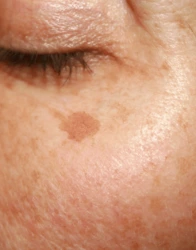How To Remove Pigmentation From The Face
Battling uneven skin tone and dark patches is a common concern for many individuals. A clearer complexion is often desired for a fresh, rejuvenated appearance. In this article, we delve into various m...

If you’re reading this, chances are you’ve found yourself bothered by those unwelcome patches of discolouration on your skin, commonly known as pigmentation. Whether it’s a result of too much sun, the natural ageing process, or even hormonal changes, pigmentation can be a real confidence killer. But fret not, for there’s light at the end of the tunnel, particularly if you’re based in Singapore. In this bustling city-state, laser pigmentation removal has become a go-to solution for many, offering a range of state-of-the-art treatments designed to give your skin a fresh, even look.
In this comprehensive guide, we’ll explore the various types of pigmentation you might be grappling with, delve into the top laser treatments available in Singapore, and offer tips on how to select the right laser treatment for you. So, let’s dive in and help you take the first step towards reclaiming your flawless complexion.

First on our list is Melasma, often referred to as the “mask of pregnancy.” This type of pigmentation often appears in the form of brown or grey-brown patches, predominantly on the face. It’s more prevalent in women, especially during periods of hormonal changes like pregnancy or menopause. However, it’s not exclusive to them; men can experience it too. Melasma is usually a consequence of sun exposure and hormonal imbalance, which explains why it’s more common in sunny climates like Singapore.

Moving on, let’s talk about Solar Lentigo, commonly known as sun spots. These are small, flat, darkened spots that usually appear on areas frequently exposed to the sun, like the face and hands. Although they’re often associated with ageing, younger individuals aren’t entirely exempt, especially in sunny countries.
Next up, we have Hori’s Nevus, a less talked about but not uncommon type of pigmentation. Typically found in Asian women, these blue-grey spots generally manifest on the cheeks. Unlike other types of pigmentation, Hori’s Nevus tends to appear without a clear cause, making it somewhat mysterious but nonetheless treatable.
Now, let’s delve into Post-inflammatory Hyperpigmentation. This usually occurs after a skin injury or inflammation, such as acne, eczema, or even after certain skin treatments. The skin darkens at the site of healing, creating patches that are darker than the surrounding area. It’s vital to treat the underlying condition first before tackling the pigmentation itself.

Ah, freckles! Those cute, small, brownish spots that seem to multiply with every minute you spend under the sun. While many find them endearing, others wish to reduce their appearance for a more even skin tone. Unlike other forms, freckles are mostly genetic but can become darker and more apparent with sun exposure.

Last but not least, let’s touch on Seborrheic Keratosis, affectionately known as “pigmentation bumps.” These growths are often brown or black and have a waxy or scaly texture. Generally harmless, they can appear anywhere on the body and are more common as you age.
Singapore is home to a plethora of advanced treatments for skin pigmentation, and here we’re going to guide you through some of the most popular options.
Let’s kick off with Q-Switched Lasers, a popular choice for those looking for quick and effective results. These lasers emit high energy in short pulses, targeting the pigmentation without damaging the surrounding skin. What sets this apart is its ability to break down the pigment into smaller particles, which your body can then naturally eliminate. This makes Q-Switched Lasers an excellent option for various pigmentation types, from sun spots to freckles.
Next on our list is Fractional Lasers. Unlike Q-Switched, these lasers create tiny “micro-injuries” in the skin to stimulate collagen production. The renewed collagen helps in evening out the pigmented areas. Fractional lasers can treat deeper layers of skin, making them ideal for more stubborn cases like melasma. However, expect a slightly longer recovery time compared to Q-Switched Lasers.
Switching gears a bit, Chemical Peels offer a non-laser alternative. A specially formulated chemical solution is applied to your skin, which causes the top layer to peel off, making way for new, fresher skin to replace it. While effective for lighter forms of pigmentation like freckles, it may require multiple sessions for more severe cases.
Now, let’s talk about Pico Lasers. These are the new kids on the block in the world of laser treatments, boasting even shorter pulses than Q-Switched Lasers. They offer a gentler treatment with less downtime, yet they’re remarkably effective at treating a wide range of pigmentations. For those keen on minimal discomfort and quick recovery, Pico Lasers might just hit the spot.
Last but certainly not least, we have Microdermabrasion. This treatment involves a machine that exfoliates the top layer of your skin using tiny crystals. While it’s the gentlest option on this list, it’s best suited for very superficial pigmentation and often needs to be combined with other treatments for maximum effect.
By now, you’ve got a fairly robust understanding of the types of pigmentation you could face, as well as the range of treatments available in Singapore. But the question remains: how do you choose the best pigmentation removal treatment for you?
One of the first concerns that come to mind when considering any skin treatment is, “Is laser pigmentation removal safe?” Safety should be at the top of your list when picking a treatment. Most laser treatments are non-invasive, meaning they won’t require any incisions or injections. Still, it’s crucial to read pigmentation removal reviews and consult a reputable dermatologist. Discuss any potential laser pigmentation removal side effects and ensure the clinic you choose maintains the highest standards of hygiene and care.
Now, let’s move on to efficiency and speed. When you’re investing both time and money, you’ll naturally want a treatment that works quickly and delivers results. That said, effectiveness varies from treatment to treatment and person to person. Here’s where recovery time plays a part: some treatments like Pico Lasers offer faster laser pigmentation removal recovery times, allowing you to get back to your normal routine more swiftly.
Last but by no means least, you’ll need to think about what’s best for your specific skin type. You wouldn’t wear shoes that don’t fit, so why settle for a treatment that’s not tailored for you? Different skin types and tones can react differently to treatments. A dermatologist can perform a patch test and guide you through choosing a method that minimises risks and maximises results.
Choosing the right pigmentation removal treatment in Singapore can feel like a minefield, but you’re already ahead of the game if you’ve read this guide. Keep safety, effectiveness, and your skin type in mind to make a well-rounded decision. A professional consultation from an expert can add that final, personalised touch. Here’s to your journey toward clearer, more radiant skin – now more attainable than ever.
The cost of laser pigmentation removal in Singapore can fluctuate based on several variables like the size and location of the pigmented area, the number of sessions needed, and the specific clinic you opt for. Generally, prices can range from around $200 to $500 per session.
Permanent removal of pigmentation may vary from person to person. Treatments are able to provide noticeable outcomes, but results and their recurrence can differ based on factors such as the severity of the condition, maintenance, and sun exposure. Ongoing care and adherence to recommended guidelines can help maintain the results.
The number of laser sessions required for effective pigmentation removal varies based on several factors such as the type, size, depth, of the pigmentation, etc.

Fill up the form and we will get back to you as soon as possible.